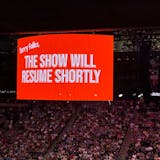Opinion editor's note: Star Tribune Opinion publishes a mix of national and local commentaries online and in print each day. To contribute, click here.
•••
On Aug. 8, Star Tribune Opinion reprinted two excellent commentaries on the U.S. economy by two top-notch economists, Paul Krugman ("After the Fitch downgrade: Is a U.S. debt crisis looming? Even possible?") and Claudia Sahm ("Bidenomics and the battle between efficiency, resilience"). On the off-chance that some readers got lost when Krugman introduced his five-variable equation or became confused between Sahm's reference to "investing in the supply side" and Reagan's supply-side economics, please allow me to clarify a bit and throw in my two cents as well.
Krugman, a New York Times columnist and Nobel laureate in economics, is absolutely correct when he argues we need not worry about a U.S. debt crisis. Have you ever noticed that when people wail and gnash their teeth over the national debt, it is the politicians and their constituents, but not the economists? Economists know, for example, that Krugman is correct in telling us it isn't the absolute size of the debt that matters, but rather its size relative to GDP. If the debt is growing, but so too is GDP, well then, they cancel out, yes?
It becomes a bit more complicated when Krugman distinguishes between the primary deficit (i.e., the government budget deficit in one year that excludes government interest payments) on the one hand and the difference between the interest rate and GDP growth rate, but the point remains: The growth of GDP is the critical variable.
Nevertheless, there are two concerning items, one scarcely mentioned by Krugman and the other ignored entirely. These are the growth in entitlement spending and the conservative mission to reduce taxes, especially on corporations and those with wealth. The latter was evident in the 2017 Republican tax bill (Republican president, Senate and House). And herein lies the primary gap in the commentary by Sahm.
Sahm, a former Federal Reserve economist, defines the two principal goals of economists as efficiency (greatest output at lowest cost) and resilience (crisis aversion). The latter is what she means when referencing "investing in the supply side," and it involves reasonable government interventions like investing in computer chip production in case of war or pandemic that prevent overseas shipments from reaching the United States. I would define the goals of economists differently. I would say the primary goals are efficiency and equity, with efficiency incorporating the concept of resilience. What both authors have left out is the economic objective of equity, which simply means "fairness."
All economists agree the free markets contain basic market failures that compromise either efficiency or equity or both, thereby requiring government intervention. Examples of inefficiency include the existence of market power (as when market prices are exceptionally high due to the power of large firms dominating an industry); examples of inequity include people living without housing, food and health care, and examples of both include the existence of externalities (as when the costs created by business firms spill over onto society in the form of pollution and climate change).
